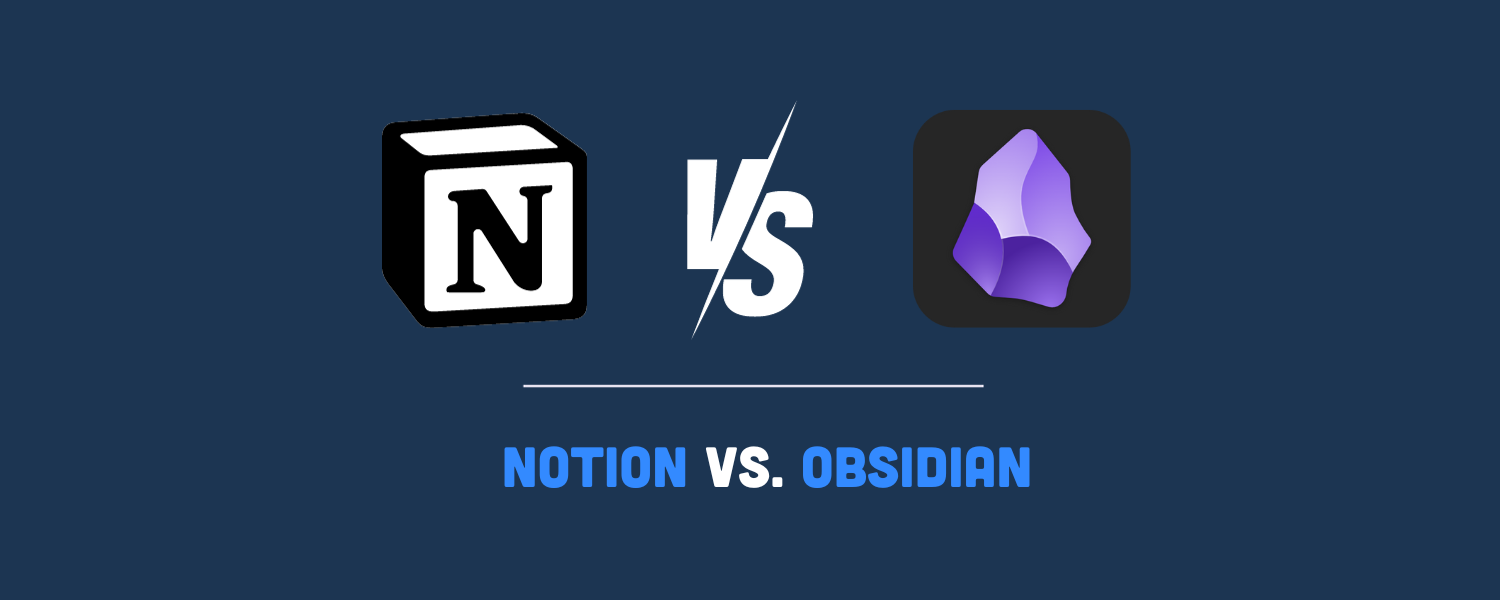Notion and Obsidian, two leading platforms in the realm of digital organization and note-taking, offer distinct features and experiences to cater to diverse user needs. Notion is praised for its comprehensive approach, blending note-taking, database management, and collaborative tools, making it ideal for both individual and team use. Obsidian, on the contrary, focuses on personal knowledge management with a local storage model, emphasizing privacy and data security through features like a unique knowledge graph. Let’s see which one you should choose based on your needs.
Table of contents
Notion vs. Obsidian: An overview
| Feature | Notion | Obsidian |
|---|---|---|
| Primary use | All-in-one workspace for notes, databases, and project management | Personal knowledge management with a focus on privacy |
| User interface | Intuitive and highly-customizable, blocks-based structure | Minimalist, focused on note connections |
| Collaboration | Strong collaboration and team features | Limited collaboration tools |
| Pricing | Free, Plus, Business, and Enterprise tiers | Free with paid options for sync and publishing |
| Platforms | Web, Windows, Mac, iOS, Android | Windows, Mac, iOS, Android, Linux |
| Offline access | Available with some limitations | Strong offline capabilities |
| Real-time collaboration | Yes | No |
| Knowledge graph | No | Yes, visual representation of note connections |
| Backlinking | Yes | Yes, core feature for organizing notes |
| Sync across devices | Yes (requires internet connection) | Paid option available |
| API support | Yes | Yes |
| Template support | Extensive range of templates available | Limited template support |
| Markdown support | Yes | Yes |
| File import options | Supports multiple file types and integration with other apps | Primarily Markdown files (.md) and other apps such as Notion |
| Publish notes as websites | Yes | Yes (with Obsidian Publish) |
| Price | Free, Plus ($8/month), Business ($15/month), Enterprise (custom pricing) | Free, Personal (Free), Catalyst ($25 one-time), Commercial ($50/year per user) |
Reasons to choose Notion
- All-in-one workspace: note-taking, project management, and database functionalities
- Highly customizable with a wide range of templates
- Excellent team collaboration with real-time editing
- Multiple integrations with API, such as Slack, Google Drive, and Asana
- User-friendly interface
- Robust and powerful
Reasons to choose Obsidian
- Local storage and data security and privacy
- Knowledge Graph feature for a visual representation of relationships between notes
- Extensive plugin options
- Customizable interface + Custom CSS
- Minimalistic design with a distraction-free environment
- Great offline functionality
What is Notion?
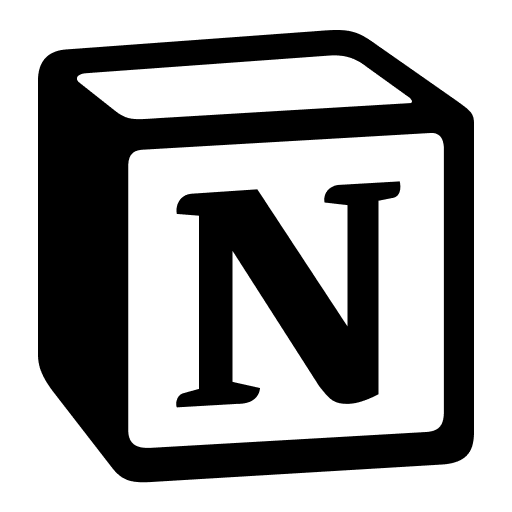
Notion is a versatile, all-in-one productivity app that combines note-taking, task management, databases, and project planning into a single platform.
Known for its flexibility, it allows users to create customized workspaces using a blocks-based structure, enabling them to organize various types of content, from simple notes to complex databases with dependencies, connections, file uploads, and much more.
It’s useful for individuals who want to keep track of their shopping lists, finances, and any other information from their personal and professional lives and also for teams and large companies looking for a comprehensive structure of their content, processes, and tasks.
What is Obsidian?
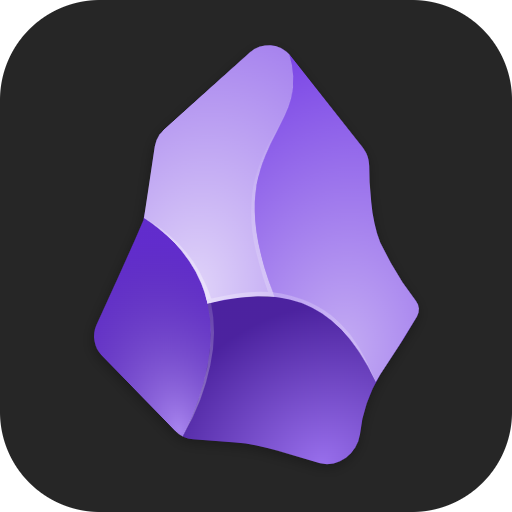
Obsidian is a note-taking application designed for personal knowledge management and focused on privacy and data security.
It operates on a local storage model, storing all notes directly on the user’s device. Its knowledge graph visually maps out the connections between notes, aiding in the organization and retrieval of information.
Obsidian’s approach to note-taking emphasizes the interconnection of ideas through bi-directional linking, making it ideal for building wikis, research databases, and personal knowledge bases.
Notion vs. Obsidian: What are the differences?
Let’s compare Notion and Obsidian in detail in this section, taking into account everything that might be of interest to your use case.
User experience
Notion may look complex at first, but it has a user-friendly interface that lets you customize almost everything. Its visually appealing design is clean and intuitive, making it accessible to users of all technical levels. The platform excels in presenting a sleek workspace, where the blocks-based structure simplifies content creation and organization.
The flexibility and range of features Notion offers can be a double-edged sword. For new users, the abundance of options might lead to a steeper learning curve as they navigate through the various functionalities.
Some users have also pointed out that the UI can become cluttered with extensive use, which could impact the overall user experience.
Despite these challenges, Notion’s strengths in versatility and collaboration make it a compelling choice for those seeking a comprehensive tool for managing work and personal projects.
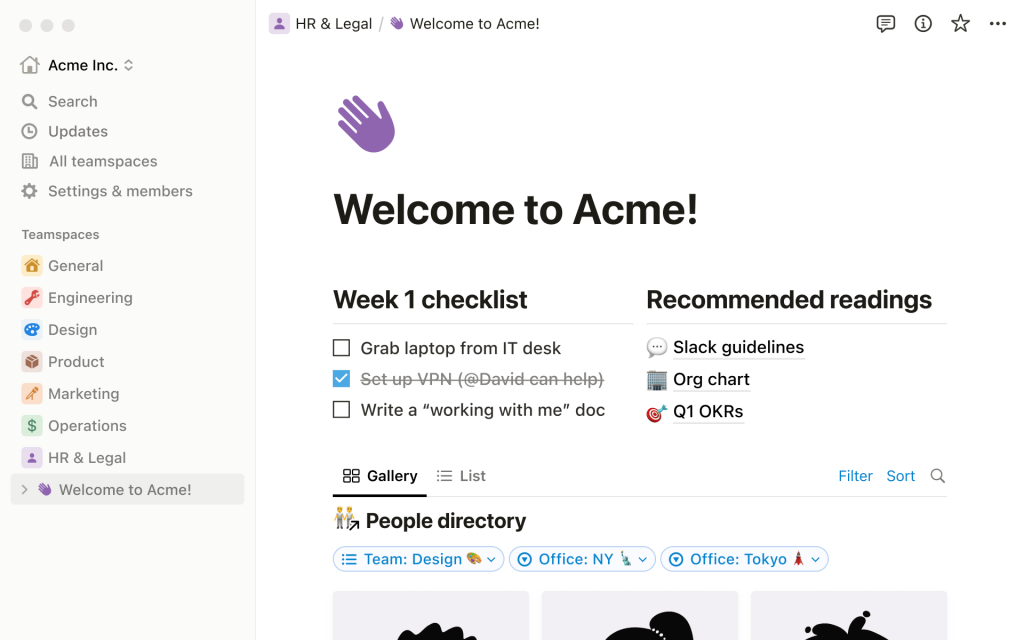
Image by: Notion
In contrast, Obsidian prioritizes simplicity and efficiency in its user experience. The platform is designed with a clean and uncluttered interface, offering a distraction-free environment for note-taking and knowledge management.
This minimalistic approach is particularly appealing to users who prefer a streamlined experience without the bells and whistles of more complex platforms.
Obsidian’s user experience is centered around its bi-directional linking system and Knowledge Graph feature. These tools enhance the organization and navigation of notes, allowing users to visualize connections and build a comprehensive knowledge network.
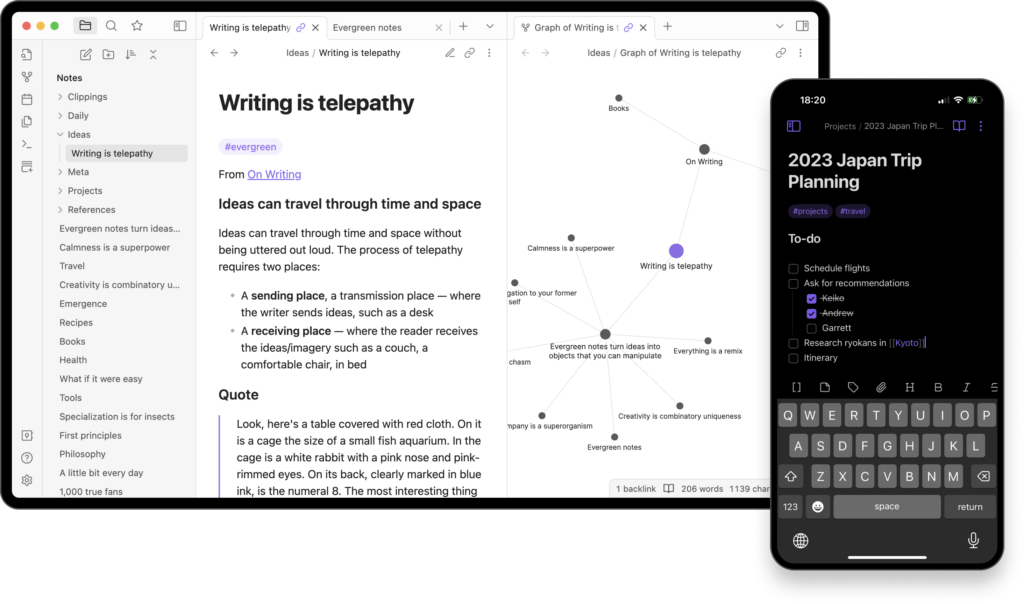
Image by: Obsidian
It’s also worth noting that Obsidian has stronger offline capabilities than Notion since it’s locally based. Although Notion can operate offline, it has many limitations to it.
Note-taking
Notion’s approach to note-taking is highly versatile, allowing for a range of formats and styles using multiple predefined templates created by the developers and users.
👉 Learn more: 30+ Best Free Notion Templates in 2024
Users can create pages that act as individual notes, which can then be organized into a hierarchical structure with databases, folders, tags, and many other properties. The platform uses a blocks-based system, where each piece of content, whether text, image, or embedded file, is treated as a block.
In addition, Notion’s rich text editor supports various multimedia elements, including images, videos, and web embeds, making the note-taking experience dynamic and visually engaging. You can also store content from more than 500 embeddable services.
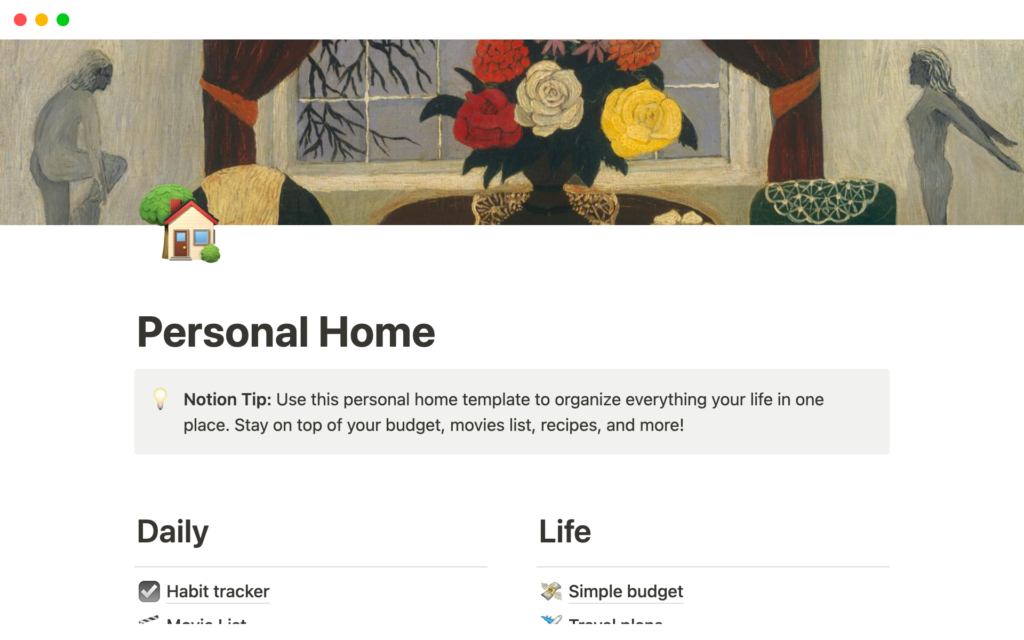
Obsidian takes a different approach, focusing on plain text Markdown files for note-taking. This approach appeals to users who prefer a straightforward, text-focused experience. Markdown is a lightweight markup language that allows for easy formatting of text, making it suitable for users who prioritize writing and organization over visual elements.
A key feature of Obsidian’s note-taking is its emphasis on linking notes. Users can create bi-directional links between notes, forming a network of interconnected ideas, which is visually represented in the Knowledge Graph. This feature is particularly useful for building wikis, research projects, or personal knowledge bases where the relationships between notes are as important as the notes themselves.
While Obsidian’s user interface is more minimalist compared to Notion, it offers a distraction-free environment, ideal for focused writing sessions. The platform’s extensive plugin system further enhances the note-taking experience by adding functionalities like custom themes, enhanced editors, and additional organizational tools.
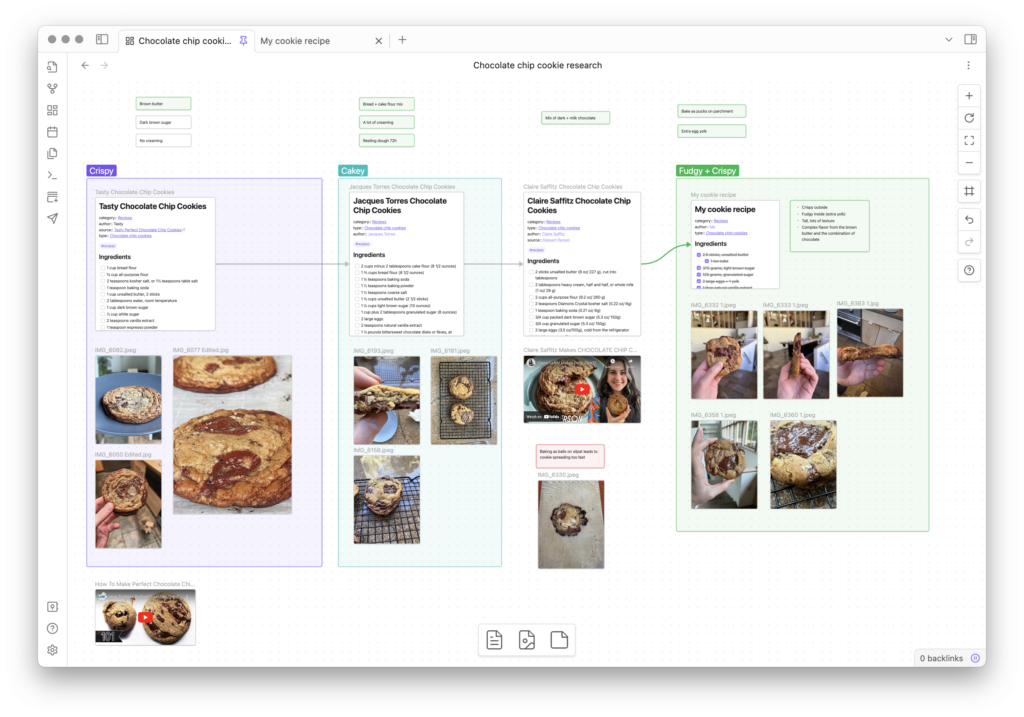
Image by: Obsidian
Organization
Taking excellent notes is important, but organizing them is essential. Notion uses several viewing options, including:
- Lists
- Calendars
- Boards
- Galleries
Each of these views is based on the information of a specific database that can be retrieved to display notes and information exactly the way you want.
They can be customized down to the last detail, so they only show specific data using filters. In fact, using different views for the same database is one of the best use cases for Notion.
Additionally, notes can be linked and even synced to automatically update the information if they are in different sections, thus saving time.
Obsidian operates on a local storage model, keeping your notes securely on your device, which is a key differentiator from Notion’s cloud-based system.
Its unique selling point in the organization is, again, the knowledge graph, which interconnects notes through bi-directional linking. This feature is valuable for connecting various notes back to a central idea and keeping them visually organized, something Notion can’t do in this way.
Lastly, Obsidian incorporates a quick button to add a today’s note, which is always handy when you want to annotate something quickly.
Collaboration
Notion excels in collaboration and note-sharing capabilities, making it a superior choice for team-based projects and collaborative and dynamic work environments.
The platform allows real-time editing and commenting, enabling multiple users to work on the same document simultaneously. This feature fosters a seamless collaborative experience, especially beneficial in remote work scenarios.
The strength of Notion lies in its ability to provide shared workspaces where team members with different roles and permissions can collectively edit, comment, and view documents. Users can easily share links to their workspaces with others, enhancing the collaborative aspect.
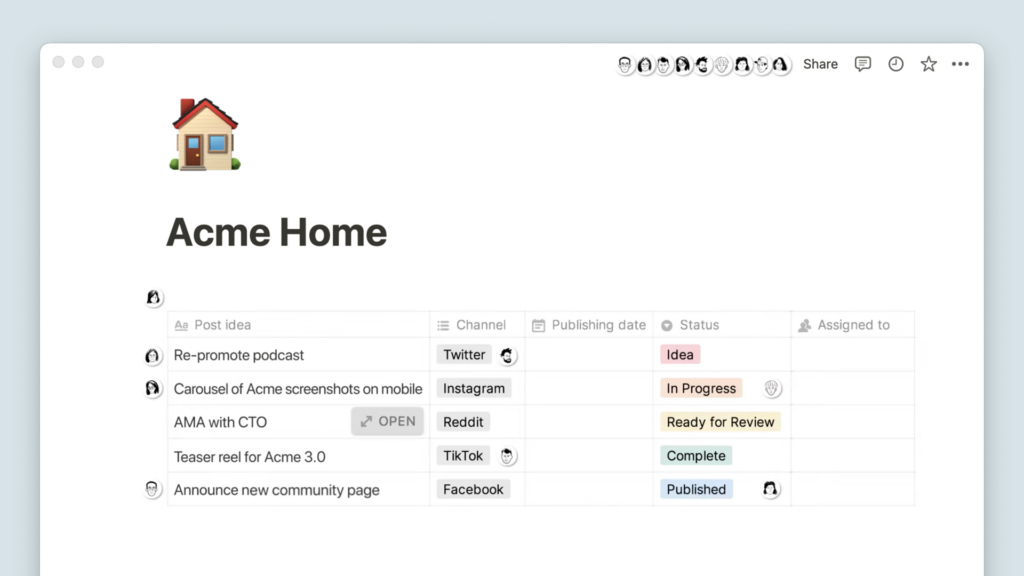
Image by: Notion
In contrast, Obsidian’s collaboration features are more limited compared to Notion. Obsidian does not offer native real-time collaboration capabilities. However, it allows users to share their notes with others through Obsidian Publish. This enables users to share their markdown files in text or PDF format, but its collaboration features feel more limited.
Lastly, users can share the public URL of their Obsidian vaults, but this is more suited for publishing notes to a wider audience rather than collaborative editing in real time.
Conclusion
When you compare Notion and Obsidian, you’re looking at two top tools for organizing your notes and projects.
Notion is like a Swiss Army knife: it has lots of tools in one. It’s great for making notes, managing tasks, and working together with others in highly customizable templates and diverse use cases. It’s user-friendly and perfect for people and teams who want everything in one place. Notion is especially good for teamwork because everyone can work on the same thing at the same time.
Obsidian, however, is more about keeping your notes private and well-organized. It stores everything on your own device, focusing on security. Its special feature is the ‘knowledge graph’, which helps you see how your notes are linked. Obsidian is simpler and more focused, ideal for people who want a straightforward way to write and connect their thoughts. It’s not as strong as Notion for group work but great for personal projects.
If you choose Notion, we have the perfect solution to boost your productivity using the platform. At 2sync, we offer seamless syncs to other tools like Google Calendar and Todoist so all your events and tasks stay in one place and are easier to coordinate for you and your team. This makes Notion an even more valuable tool for any use case.
Do you want to give it a try? Try your first automation today and see it by yourself.


